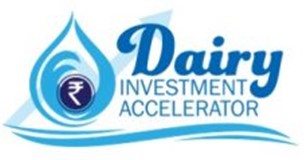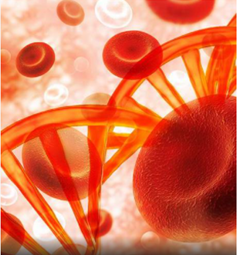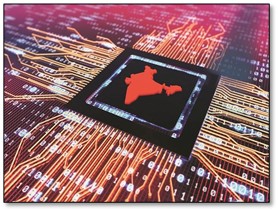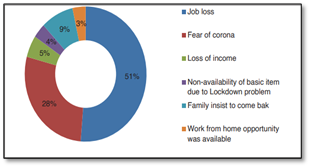Tuesday, 20th July 2021
Dairy Investment Accelerator
In News
Government has set up Dairy Investment Accelerator to promote and facilitate investments in the Dairy sector.

About the News
- Dairy Investment Accelerator: The Department of Animal Husbandry & Dairying (DAHD), Government of India, with a view to provide dedicated focus towards promoting & facilitating investments in the Indian Dairy sector, has set up Dairy Investment Accelerator under its Investment Facilitation Cell.
- Role of Dairy Investment Accelerator: This Investment Accelerator is a cross functional team constituted to serve as the interface with investors. It shall provide support across the investment cycle like offering specific inputs for evaluation of investment opportunities, addressing queries about application to govt. schemes, connecting with strategic partners and providing on-ground assistance with state departments & relevant authorities
- Animal Husbandry Infrastructure Development fund: Dairy Investment Accelerator would also generate awareness about the ₹15,000-crore Animal Husbandry Infrastructure Development fund to support entrepreneurs, private companies, MSME, Farmers Producers Organisations (FPOs), and Section 8 (charitable) companies.
- Eligible entities can avail the benefits of the scheme to set up new units or expand existing units in areas of dairy processing and related value addition infrastructure, meat processing and related value addition infrastructure and animal feed plants. The benefits available under the fund include 3 per cent interest subvention on loans, two year moratorium with six-year repayment period and ₹750 crore credit
Significance of the Dairy sector in India
- India’s production capacity: India is the largest milk producer contributing 23% of global milk production. Annual milk production in the country has grown by 6.4% (CAGR) in the past 5 years.
- Contribution to the economy: Dairy is a high priority sector for Government of India due to its socio-economic significance. It is the single largest agricultural commodity contributing 5% of the national economy and employing 80 Mn+ farmers directly.
- Expansion of Dairy Products market: Dairy India also boasts a large domestic packaged dairy products of market worth Rs. 2.7-3.0 lakh crore, witnessing a strong double-digit growth. The market growth in Dairy requires support of significant infrastructure investment across processing, chilling, logistics, cattle feed etc. Further, lucrative untapped opportunities exist in areas such as value-added dairy products, organic/ farm fresh milk and exports.
- Investments in Dairy: The Dairy sector has seen substantial foreign direct investment (FDI) constituting about 40% of FDIs Indian food sector. To facilitate the infrastructure growth, Central/ State Governments have released various incentives to attract investments in this sector.
Sources:
Moon ‘wobble’ affect rising tides.
In News
According to research led by NASA scientists, U.S. coastlines will face increasing flooding in the mid-2030s due to a regular lunar cycle that will magnify rising sea levels caused by climate change.

About the Study
- Coupled with the climate-change-induced rise in sea levels, the tides in Earth’s oceans, which are controlled by the Moon's gravitational pull, could also play a role in the severe flooding of worldwide coastal areas by the time the ongoing decade approaches its end.
- The NASA study elucidates how the moon’s elliptical orbit around Earth and the moon’s wobble effect can lead to considerable changes on our planet.
- The moon wobble is nothing but a regular swaying in the moon’s orbit. It was first documented way back in 1728. This wobble takes over an 18.6-year period to complete, and continues in a cyclic fashion.
- The upcoming changes in the lunar cycle will pose a serious threat, as the amplified high tides coupled with the rising sea levels will make the risk of flooding far greater across all coastal regions of the globe.
- The study predicts that the high tide-associated floods, also known as nuisance floods or sunny day floods, may occur in clusters that could last for months or even for longer periods.
- This surge will be closely associated with the position of the Moon, Earth and the Sun. When the Moon and Earth line up in specific ways with each other and the Sun, the resulting gravitational pull and the ocean’s corresponding response may lead to floods every day or two.
What impact does this wobble have on Earth?
- The moon wobble impacts the gravitational pull of the moon, and therefore, indirectly influences the ebb and flow of tides here on the Earth. In fact, as per the NASA study, each wobble cycle has the power to amplify and suppress the tides on Earth.
- One half of the 18.6-year cycle suppresses the tides, which means that the high tides get lower, while the low tides get higher than normal. Once this cycle completes, the situation flips—in the subsequent cycle, the tides are amplified, with high tides getting higher and low tides, lower.
- The lunar cycle is expected to shift again by mid-2030, and in the coming phase, the tides will amplify once again.
Sources:
Government launches National Logistics Excellence Awards
In News
Ministry of Commerce & Industry has launched National Logistics Excellence Awards.
Details of the Award
- The awards will highlight best practices including consolidation, process standardisation, technological upgrade, digital transformations, and sustainable practices in the logistics sector.
- The awards are in two categories, the first group includes logistics infrastructure/service providers and second one is for various user industries.
|
Logistics Cost Component |
Developed Countries |
India |
|
Transportation costs |
5–6% of GDP |
7% |
|
Inventory costs |
2–3% of GDP |
6.3% |
|
Administrative and overhead |
0.5–1% of GDP |
0.7% |
Logistics sector in India
- Logistics Industry includes all activities of the supply chain such as transportation, customer service, inventory management, flow of information and order processing. Other activities of the supply chain are warehousing, material handling, purchasing, packaging, information dissemination and maintenance among others.
- As of 2017, India’s logistics share of GDP was 13.5%. It is currently valued at over $160 billion and expected to reach $215 billion by 2020-22.
- In 2017, logistics sector absorbed 22 million people which is set to grow to 40 million by 2020.
- A report by Avendus Capital says that more than 80% of the overall logistics spend in the country goes to the unorganized sector.
Challenges of Logistics Sector
- Traditionally, steep logistics costs are a grave concern in India. By the end of 2017-18, logistics expenses accounted for 14% of the GDP while the global average is 8-9 per cent.
- Other key issues affecting the overall performance included: gaps in infrastructure which had so far been developed on a sectoral basis, a varied and silo-based legal and regulatory environment, disjointed IT systems, overdependence on road transport, suboptimal use of existing infrastructure due suboptimal sharing of capacities, lack of skilled manpower, low predictability and visibility in supply chains resulting in heavier than necessary inventory costs.
Significance of Efficient Logistics sector in India
- Vision of ‘Make in India’ and ‘Aatmanirbhar Bharat’ needs high levels of logistical efficiency.
- Beyond providing broad social benefits to farmers and low-income workers, efficiency in logistics can also enhance the quality of life for practitioners within the logistics industry.
- Logistics efficiency can benefit farmers through reduction in loss and wastage of produce during transportation. Currently, India loses 40% of agricultural production to wastage in supply chain.
- Efficient logistics is particularly important for micro small and medium enterprises, which employ over 110 million people.
- Improved logistics can bring about important environmental benefits. Currently, the share of CO2 emissions from logistics is around 7% of the total CO2 emissions in India.
Government Approach to help logistics sector
- Grant of Infrastructure status to Logistics sector which allows providing credit to the exporters at competitive rates and on a long-term basis, reducing logistics costs.
- Creation of Logistics Division in the Department of Commerce with the mandate to develop an Action Plan for the integrated development of the logistics sector.
- The National Logistics Policy is in its final stages of being issued.
- A National Logistics Law that would provide an agile regulatory environment through a unified legal framework for “One Nation-One Contract” paradigm (single bill of lading across modes) supporting “One Nation-One Market” agenda has been framed and is under consultation.
- A National Grid of Logistic Parks and Terminals is planned with a unified approach for coordinated development of Intermodal facilities; promote intermodal and Multimodal Logistic Parks (MMLPs) as a separate class of infrastructure.
Sources:
Extension to OBC Sub Categorisation Commission
In News: The Union Cabinet has approved an extension by six months of the term of the Commission constituted to examine the issue of sub-categorisation within Other Backward Classes (OBCs) in the central list up to 31st January 2022. It is the commission’s 11th such extension.
Significance of the proposed extension
- It will enable the Commission to submit a comprehensive report on the issue of sub-categorization of OBCs, after consultation with various stakeholders.
- Its objectives include working out a mechanism, criteria, norm, and parameters through a scientific approach for sub-categorization within the OBCs and identifying the respective castes or communities or sub-castes or synonyms in the Central List of OBCs and classifying them into their respective sub-categories.
About the Commission
- Also called Rohini Commission, it was constituted under Article 340 of the Constitutionwith the approval of the President in 2017.
- It had been constitutedto complete the task of sub-categorizing 5000-odd castes in the central OBC list to ensure more equitable distribution of opportunities in central government jobs and educational institutions.
- In 2015, the National Commission for Backward Classes (NCBC) had recommended that OBCs should be categorized into extremely backward classes, more backward classes and backward classes.
Work of the Commission
- The commission meets the representatives of state governments, state backward classes commissions, community associations etc. apart from obtaining caste-wise data of OBCs in higher educational institutions, central departments, public sector banks and financial institutions.
- The commission had proposed to divide OBCs into four subcategoriesnumbered 1, 2, 3 and 4 and split the 27% into 2, 6, 9 and 10%, respectively.
- It also recommended complete digitization of all OBC records and standardized system of issuing OBC certificates.
Source:
- Cabinet decision: OBC sub-categorisation panel’s term extended
- OBC sub-categorisation commission’s term extended by 6 months
- Cabinet approves Extension of tenure of the Commission constituted under Article 340 of the constitution to examine the issue of sub-categorization within Other Backward Classes in the Central List
- Panel to examine OBC sub-categorisation seeks third extension
- Uneven distribution of OBC benefits: Panel gets extension for six months
- Appointment of a Commission to investigate the conditions of backward classesAppointment of a Commission to investigate the conditions of backward classes
- How Can Sub-categorisation of OBCs Work? Make Quotas Proportional to Their Population
WTO deal on Fisheries Subsidies
In News
India has opposed a move by developed countries at the World Trade Organisation (WTO) to scrap subsidies for fishermen.
About the News
- Member countries of the World Trade Organization have pledged to conclude the negotiations for the fisheries subsidies agreement, which would set new rules for the global fisheries industry.
- WTO member countries failed to reach a consensus on a proposed global deal to end harmful fishing subsidies at a key meeting after the US and European Union opposed India’s demand for special and differential treatment (S&DT) for all developing countries.

About the Fisheries Subsidies Negotiations at WTO
- The negotiations on fisheries subsidies disciplines have been ongoing for nearly 20 years. Not all subsidies are considered harmful and some would not be covered by any WTO agreement. The Pew Charitable Trusts estimates that an ambitious deal at the WTO could boost the amount of fish in the world by 12.5% by 2050, based on a model it shared with negotiators.
- So, based on the mandate from Ministerial Conference (MC11) and UN SDG Target 14.6, negotiators in the WTO were given the task of securing an agreement on disciplines to eliminate subsidies for illegal, unreported and unregulated (IUU) fishing and to prohibit certain forms of fisheries subsidies that contribute to overcapacity and overfishing, with special and differential treatment for developing and least developed countries integral to the negotiations.
|
Illegal, unreported and unregulated (IUU) fishing: IUU fishing includes all fishing that breaks fisheries laws or occurs outside the reach of fisheries laws and regulations. · Illegal Fishing: It usually refers to fishing without a license, fishing in a closed area, fishing with prohibited gear, fishing over a quota, or the fishing of prohibited species. · Unreported Fishing: Fishing which has not been reported, or has been misreported, to the relevant national authority, in contravention of national laws and regulations; or Are undertaken in the area of competence of a relevant regional fisheries management organisation which have not been reported or have been misreported, in contravention of the reporting procedures of that organisation. · Unregulated Fishing: A lot of unregulated fishing occurs on the high seas. The high seas are international waters beyond the exclusive economic zone, which extends 200 nautical miles from the shoreline, of a coastal state. Patchy regulation, little enforcement, and the vast expanse of the ocean, combine to allow rampant illegal and unregulated fishing in those areas. SDG 14.6: It aims to prohibit certain forms of fisheries subsidies which contribute to overcapacity and overfishing, and eliminate subsidies that contribute to IUU fishing, and refrain from introducing new such subsidies, recognizing that appropriate and effective special and differential treatment for developing and least developed countries should be an integral part of the WTO fisheries subsidies negotiation. |
What are the problems associated with Fisheries Subsidies?
- Declining Fish Stocks: According to the latest data from the UN Food and Agriculture Organization, fish stocks are at risk of collapsing in many parts of the world due to overexploitation. It is estimated that 34% of global stocks are overfished compared with 10% in 1974, they are being exploited at a pace where the fish population cannot replenish itself.
- Endangering Coastal Communities: Declining fish stocks threaten to worsen poverty and endanger coastal communities that rely on fishing. Roughly 39 million people depend on capture fisheries for their livelihood. Healthy seas are also important for food security, with fish providing 20% of animal protein needs on average for 3.3 billion people.
- Uneconomical Fishing: Low fish stocks makes fishing time consuming and expensive. The problem, however, is that very often state funding keeps unprofitable fishing fleets at sea. Environmentalists say knocking out subsidies that promote unsustainable fishing is the single most important thing governments can do to help reverse the decline.
- Race to the Bottom: Global subsidies are estimated at $35.4 billion according to a 2019 study published in Marine Policy. The top five subsidisers are China, the EU, the United States, South Korea and Japan, it said. This is creating a "race to the bottom", with countries that have depleted stocks in their own waters travelling further to compete for those that remain.
Why is India opposing the scrapping of subsidies on fisheries?
- Livelihood Crisis: India wants to protect subsidies for low-income, resource-poor fishermen for whom it is a matter of livelihood and constitutes a significant electorate in coastal states such as Gujarat, Tamil Nadu, Karnataka, and Kerala. Therefore, it is imperative to preserve space for growth in fishing capacities of the developing world for the future.
- Need for Equity: The sustainability based approach in the Overcapacity and Overfishing pillar in the current form of negotiations will create significant inequity for developing countries. Given that fisheries are a common endowment to humanity and a global public commons, the sharing of this should be in an equitable and just manner.
- Sacrificing Future ambitions: Countries like India who are yet to develop fishing capabilities, cannot be expected to sacrifice their future ambitions, while protecting those members providing huge subsidies and overexploiting fisheries resources and continue to engage in unsustainable fishing.
- A deal is mostly targeted at China, which is the largest catcher and exporter of fish and provides huge domestic subsidy to its fishermen. India is a distant seventh among top fish exporters and does not indulge in IUU fishing which WTO wants to curb.
What has been India’s proposal in the WTO negotiations?
- Supports an agreement on subsidies: India has expressed its keenness to finalise the agreement because irrational subsidies and over fishing by many countries is hurting her fishermen and their livelihoods. However, it remains disappointed at the lack of right balance and fairness in the agreement.
- Special and differential treatment (S&DT): An important element of what India wants is appropriate and effective S&DT. Limiting S&DT to poor and artisanal fishermen only is neither appropriate, nor affordable and not acceptable at all. S&DT has to be for a country as a whole. S&DT is needed to protect livelihoods of poor fishermen and to address food security concerns.
- Sovereign Rights: India has proposed for the preservation of the sovereign rights of coastal states to explore, exploit and manage living resources within their maritime jurisdiction, enshrined in international instruments must be preserved. The determination by coastal states should be given primacy and not be subject to WTO dispute settlement mechanism.
- Exemption eligibility: India has proposed that a developing country should not eligible for the exemption if its GNI per capita crosses $5,000 for three consecutive years, has above 2% share in global marine capture, and the share of agriculture, forestry and fishing sectors is less than 10% of its GDP. It should also be engaging in distant water fishing.
- Arguing that the focus should be on distant water and large-scale industrial fishing, India has said that the talks should seek greater contribution from those who provide large subsidies, both in value and on per capita basis while providing exemption for the needs of small and subsistence fishermen, in accordance with the principles of ‘Polluter Pays'.
Conclusion
Among the thorniest issues to resolve at the negotiations is on how to extend special and differential treatment to developing and least developed countries while preserving the overall objective of enhanced sustainability of the oceans. Countries still need to cover significant ground to make the negotiating text balanced, to meet the just concerns of developing and LDC members.
Question: Discuss the need for an agreement on fisheries subsidies at WTO. What are the concerns and proposal of India w.r.t the negotiations?
Sources:
- India opposes fisheries deal at WTO
- Why is India fighting the US, EU at WTO over a global fishing deal? Its implications for her oceans
- Factsheet: Negotiations on fisheries subsidies
- FAQ: Illegal, Unreported, and Unregulated Fishing
- Explainer: What's at stake in WTO talks on fishing rules?
- Fishery subsidies pact: Revised WTO draft fails to resolve special dispensation for poor nations
- Members pledged to conclude negotiations for fisheries subsidies pact soon: WTO
- Pact to end harmful fish subsidies difficult without special and differential treatment: India
Image Source
This day in History- 'Tranquility Base'
On July 20, 1969, the Eagle lunar landing module, carrying U.S. astronauts Neil Armstrong and Edwin (“Buzz”) Aldrin, landed on the Moon, and several hours later Armstrong became the first person to set foot on its surface. Buzz Aldrin was second as he joined his astronaut friend almost 19 minutes later. Armstrong and Aldrin spent over 21 hours on the lunar surface at a site they named 'Tranquility Base'.

Source:
Image Source:
Image of the Day- Indian photojournalist Danish Siddiqui
This is image of Indian photojournalist Danish Siddiqui, whose searing images of wars, riots and human suffering won global accolades, was killed in Afghanistan’s Kandahar province recently. Siddiqui was killed on while covering a clash between Afghan security forces and Taliban fighters near a border crossing with Pakistan in Spin Boldak.

Source:
Image Source:
Kadambini Ganguly
- Context: Google doodle has honoured Dr. Kadambini Ganguly with a special graphic on her birth anniversary recently.
- After graduating, she went on to pursue three additional doctoral certifications with a specialization in gynecology in the United Kingdom, a rarity for women in that era.
- She was the first woman to be trained as a physician in India.
- She worked through both medical service and activism in India’s women’s rights movement.
- Ganguly was also one of the six women to form the first all-women delegation of the 1889 Indian National Congress.
- She organized the 1906 Women’s Conference in Calcutta after the partition of Bengal.

Source:
- Dr. Kadambini Ganguly: Google Doodle celebrates life of India’s first woman physician
- Google Doodle celebrates Kadambini Ganguly on her 160th birth anniversary. Who was she?
Picture source:
NBDriver (neighbourhood driver)
- Context: Researchers at IIT Madras have developed an AI tool called NBDriver (neighbourhood driver).
- NBDriver is an Artificial Intelligence based Mathematical Model that can use genome sequencing data for analysing cancer-causing mutations in cells.
- By looking at the neighbourhood, or context, of a mutation in the genome, NBDriver algorithm can look at harmful “driver” mutations (that enable cancer cells to grow) and distinguish them from neutral “passenger” mutations (that do not have any effect on the progression of the disease).
- This will help in discovering potentially novel drugs targets and helps in prescribing the right drug to the right person at the right time.

Source:
- AI tool developed to study cancer-causing mutations
- IIT Madras researchers develop model to detect cancerous mutations
Image Source:
Surveillance reform is the need of the hour – The Hindu
Essence- Provisions of personal data protection legislation is problematic as it offers the government total opacity in respect of its interception and monitoring activities. This has impacts in many folds like on the fundamental rights of the citizens, threat to press freedom and separation of powers of the government. In the absence of parliamentary or judicial oversight, electronic surveillance gives the executive the power to influence both the subject of surveillance and all classes of individuals. Hence, to maintain an effective separation of powers and to fulfill the requirements of procedural safeguards and natural justice, apart from surveillance reform, Judicial oversight is also needed.
Why should you read this article?
- To get an overview of legislations related to the personal data protection in India and what are the issues associated.
- To know what possible steps should be taken to address the same.
Source:
Oil prices and Indian fiscal federalism – HinduBusiness Line
Essence : Editorial is explaining some of the key financial instruments of oil market, reasons of recent price rice & possible solutions. As a financial asset, the price of oil depends on the structure of markets, expectations of oil fundamentals and of news impacting them.
Indian fuel taxes were raised sharply during the 2020 slump in oil prices, as a way to recoup the sharp blow to tax revenues from the lockdown. But they have not been reversed although both tax revenues and international oil prices have recovered. Unfortunately, the Centre and States both compete for the space, each is afraid a retreat would allow the other to muscle in.
Centre-State shares could be settled on the lines of GST principles. Relations between the Centre and States have been fraught partly because the Constitution gave the Centre more powers in order to keep the nation together. Cooperative federalism works if functions are split according to what is best performed at different levels.
Why you should read this article?
- To understand the factors responsible for international oil price volatility.
- To know about the role of financial instruments like ETF, and how commodity market is giving ways for price discovery.
- It is providing insights into the reasons of Indian oil prices rising steeply & GST integration being a solution.
Source:
Sahyog: A Unique Village For Over A 1000 Deserted People
Background
- There are several people our society does not accept willingly like the leprosy-affected, mentally handicapped, untouchables etc
- Imagine an entire village dedicated to them, where they can live freely and without prejudice.
Sahyog: A Unique Village
- Home to vulnerable: Sahyog Kushtha Yagna Trustin Gujarat attempts to provide home to several mentally challenged people and residents are suffering from leprosy.
- Empathy: There are 433 leprosy-afflicted persons living like a joint family who are empathetic to each other’s needs and fill the emptiness of their isolated life
- Reduced the burden of disease: The disease is about to be eradicated from the state of Gujarat. In the year 1988, 28 people out of 10000 suffered from leprosy which now exists only among 0.86 people.
Values upheld by the villagers
- Respect, Dignified living, Compassion, Trust.
Where can we use this case study
- GS Paper1: Society: Topic: social empowerment
- GS paper2: Governance Development processes and the development industry —the role of NGOs, SHGs, various groups and associations
- GS paper4: Ethics and Human Interface
Source:
Share the article
Get Latest Updates on Offers, Event dates, and free Mentorship sessions.

Get in touch with our Expert Academic Counsellors 👋
FAQs
UPSC Daily Current Affairs focuses on learning current events on a daily basis. An aspirant needs to study regular and updated information about current events, news, and relevant topics that are important for UPSC aspirants. It covers national and international affairs, government policies, socio-economic issues, science and technology advancements, and more.
UPSC Daily Current Affairs provides aspirants with a concise and comprehensive overview of the latest happenings and developments across various fields. It helps aspirants stay updated with current affairs and provides them with valuable insights and analysis, which are essential for answering questions in the UPSC examinations. It enhances their knowledge, analytical skills, and ability to connect current affairs with the UPSC syllabus.
UPSC Daily Current Affairs covers a wide range of topics, including politics, economics, science and technology, environment, social issues, governance, international relations, and more. It offers news summaries, in-depth analyses, editorials, opinion pieces, and relevant study materials. It also provides practice questions and quizzes to help aspirants test their understanding of current affairs.
Edukemy's UPSC Daily Current Affairs can be accessed through:
- UPSC Daily Current Affairs can be accessed through Current Affairs tab at the top of the Main Page of Edukemy.
- Edukemy Mobile app: The Daily Current Affairs can also be access through Edukemy Mobile App.
- Social media: Follow Edukemy’s official social media accounts or pages that provide UPSC Daily Current Affairs updates, including Facebook, Twitter, or Telegram channels.





